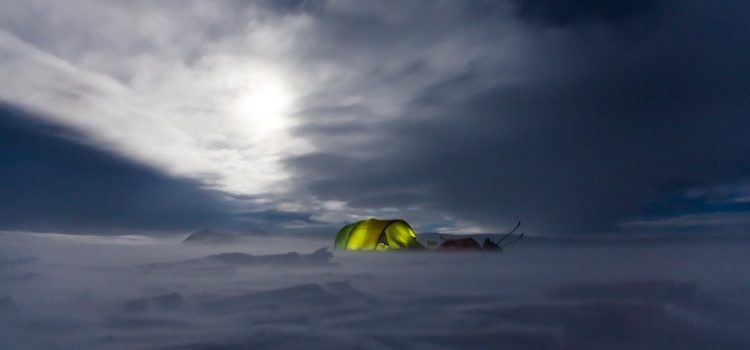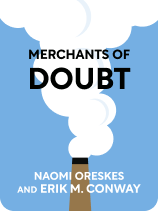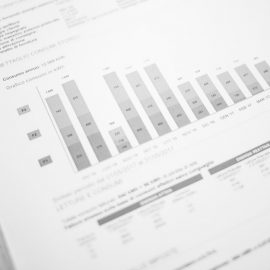

This article is an excerpt from the Shortform book guide to "Merchants of Doubt" by Naomi Oreskes and Erik M. Conway. Shortform has the world's best summaries and analyses of books you should be reading.
Like this article? Sign up for a free trial here .
Is there an ozone hole over Antarctica? What is the science? What doubts have been raised?
People have debated the size, severity, and cause of the ozone hole over Antarctica for years. Historians Naomi Oreskes and Erik Conway claim in their book Merchants of Doubt that some individuals and groups have sought to discredit some of the science because they believe it is a threat to their agenda.
Read more to learn about the debate surrounding the ozone hole over Antarctica.
Discovery of the Ozone Hole Over Antarctica
By 1985, the scientific community thought that the science of ozone was fairly well understood. Scientists understood the nitrogen and chlorine reactions, and a shuttle flight had confirmed that the chemicals predicted to exist in the stratosphere actually did.
Then, the British Antarctic Survey announced that they’d found a large ozone-depleted area over Antarctica. They’d actually found it back in 1981, but they didn’t believe their results because nothing currently known about ozone chemistry could explain them, so they studied for another four years before announcing their discovery.
Other scientists didn’t believe the results either. In addition to having no chemical explanation, there were two other reasons to doubt them:
- One of NASA’s satellites should have picked up the depletion and hadn’t.
- The Survey had used only one type of instrument that scientists knew wasn’t always accurate.
However, when NASA’s Richard Stolarski rechecked the satellite data, he found that the instrument actually had picked up the depletion, but the concentrations were so low that the instrument’s programming and scientists working with it assumed that the data was bad and the instrument faulty. The instrument wasn’t faulty, and there really was an ozone hole over Antarctica. An area where the ozone concentration was below 150 Dobson units covered the entirety of the continent.
Further Exploration of the Science
No one knew why or how the ozone hole over Antarctica had appeared, but they did know that it was a problem—if it got much bigger, it would overlap with populated areas of Australia and South America, exposing people in these countries to UV radiation.
To find out more, NOAA and NASA sent two expeditions to Antarctica:
- National Ozone Experiment. Susan Soloman and her team took instruments to the McMurdo Bay research station and measured atmospheric chemistry from the ground.
- The Airborne Antarctica Ozone Experiment (AAOE) took 400 scientists to Chile and flew two planes out of Punta Arenas to consider the effect of meteorology on ozone.
Almost every stratospheric scientist was involved with the study and by 1986, there were two theories for what had created the ozone hole over Antarctica.
- CFCs reacting with ozone had destroyed it. (Most scientists believed this explanation and the press covered it.)
- Atmospheric currents in the Antarctic lifted air from the troposphere (which doesn’t contain much ozone) into the stratosphere. This would make it look like there was an ozone hole over Antarctica when in fact there was no actual depletion.
In 1987, the AAOE found that the hole was created by both CFC breakdown and the Antarctic’s weather. There are two weather effects unique to the Antarctic:
- Polar stratospheric clouds, which are made of ice crystals. Ice crystals speed up the breakdown of CFCs.
- The polar vortex, which is a strong wind that circles the pole. It prevents air from the rest of the atmosphere (which could contain more ozone) from mixing in with the air at the pole.
Policy and Public Action
While the U.S. had banned CFCs in 1979, Europe and the Soviet Union hadn’t, and global emissions were increasing. In 1987, the United Nations Environment Programme (UNEP) put together the Montreal Protocol, which required that nations cut CFC emissions in half over a long period of time. It also required nations to meet regularly to consider new evidence.
The MOD’s Response
In 1987, Fred Singer argued that ozone depletion was natural and scientists were using “the ozone scare” to get more funding. He published an article in the Wall Street Journal in which he emphasized uncertainty, accused scientists of being self-serving and politically motivated, and tried to distract the public.
He wrote:
- Depletions weren’t serious, and no one had proved that CFCs caused them. (Uncertainty did exist, as usual, since science always has uncertainty. However, the Montreal Protocol had taken uncertainty into account—it would be renegotiated regularly as scientists made new discoveries.)
- There are many causes of skin cancer besides UV radiation coming in through ozone-depleted areas. (This was an attempt at distraction.)
- Scientists who had insisted supersonic transport emissions might destroy ozone had overreacted and were wrong. (This referred to the Climate Impact Assessment Program (CIAP) study with the inaccurate executive summary written by the Department of Transportation.) Therefore, the scientists were probably overreacting now too.
- There were other explanations for what appeared to be an ozone hole over Antarctica. For example, according to Singer, some scientists think ozone moves around the atmosphere, so while it might look like ozone is being depleted, it’s really just somewhere else. (This was ridiculous, because the satellite data covered the entire planet, so if ozone really was moving around, scientists would know about it.)
Further Exploration of the Science
As Singer had pointed out, there were still uncertainties in ozone science. For example, the ground-based instruments didn’t agree with satellite-based ones, and no one knew which was right.
Robert Watson established the Ozone Trends Panel to address some of the uncertainty. In 1988, the panel found that it was the satellite’s numbers that were off but that they could be corrected. It also found that the models had underestimated the depletion.
Arctic Expeditions
Scientists also started studying the Arctic for two reasons:
- It had similar meteorological conditions to the Antarctic, so it might have a hole too.
- More people lived near the Arctic than the Antarctic, so if there was a hole, it would be dangerous.
In 1988, scientists found that there wasn’t a hole but there was depletion:
- A plane that was measuring chlorine monoxide in the Antarctic flew by Great Slave Lake in Canada. Great Slave isn’t even far enough north to be in the Arctic polar vortex, but the atmosphere above it still had high chlorine monoxide concentrations.
- Aeronomy Lab scientists measured chlorine and nitrogen in Greenland and found that some of the same chemistry that was happening in the Antarctic was happening in Greenland too.
The MOD’s Response
In 1988, Singer tried to publish a letter to explain his theory of what had caused the ozone hole over Antarctica—natural climate variability that resulted in warming of the Earth’s surface and cooling of the stratosphere. (Cooler temperatures speed up the reactions that destroy ozone.)
Since the variability was natural, it would eventually tip back the other way and return ozone levels to what they had been previously. Nothing had to change.
Singer cherry-picked sections of two papers that discussed the relationship between surface warming and stratospheric cooling to support his position. (If read in full, both these papers discussed why warming of the surface and cooling of the stratosphere weren’t natural.) But Singer just cited the parts that worked for him:
1. V. Ramanathan predicted that as more heat was trapped closer to Earth’s surface in the troposphere, less would make it into the stratosphere, so it would cool.
2. James E. Hansen made a graph of unnatural surface warming and Singer used the graph to suggest that it was natural.
Singer’s theory wasn’t impossible, but it discounted 10 years of evidence, and Science refused to publish Singer’s letter. He eventually published in EOS, the American Geophysical Union’s newsletter.
Further Scientific Exploration
Watson of the Ozone Trends Panel organized the Airborne Arctic Stratospheric Expedition (AASE). A plane flew out of Norway throughout January and February 1989, and scientists found that the nitrogen and chlorine levels were similar to the Antarctic. The last flight found that chlorine monoxide concentrations were actually higher than in the south. However, the Arctic’s vortex wasn’t as strong and it wasn’t as cold as Antarctica, so that’s why there wasn’t a hole.
The MOD’s Response
In 1989, Singer wrote a doubt-mongering letter in National Review that:
- Complained about how hard it had been to get his 1988 letter published.
- Attacked scientists, accusing them of seeking funding, prestige, media attention, and having the desire to save the world. He also accused them of hastiness, which weakened his other accusations—if scientists really had been after funding, they would have dragged out the research as long as they could.
- Claimed that a scientist named Dobson had actually been the one to notice the ozone hole over Antarctica, and he found it back in 1956. If the hole had existed this long, then it couldn’t have been caused by CFCs because they weren’t in high concentrations in the stratosphere at that time. (Dobson had discovered some other things about ozone, but he definitely didn’t discover the hole.)
- Claimed that CFC substitutes would be ineffective, dangerous, and expensive. (No substitutes existed at the time. However, when they were invented, they weren’t toxic, corrosive, expensive, or energy inefficient—they were all better than CFCs.)
Policy and Public Action
It was now clear that CFCs were damaging the ozone layer, and regulations could be based on evidence rather than the predictions. The CFC industry realized they were damaging the ozone layer and stopped fighting.
- For example, one of the Ozone Trends Panel members was a chemist who worked for DuPont, a CFC producer. He convinced the company that the findings were critical, and DuPont’s executives decided that they’d stop producing CFCs within the decade.
In June 1990, the Montreal Protocol banned the creation of CFCs and other chlorine-releasing chemicals. The deadlines ranged from 2000-2040.
Further Scientific Exploration
Scientists kept researching ozone depletion and the atmosphere, but mainly because they were concerned about CFC substitutes and their meteorological effects, not because there was any doubt that CFCs damage the stratosphere.
The MOD’s Response
It was common in the early 1990s for capitalists to believe regulating the environment would lead to socialism, and Singer and other MODs didn’t give up. The Marshall Institute, Washington Times, National Review, and other anti-Communist or pro-business publications published Singer, and other scientists joined him to blame ozone depletion on volcanoes (even though scientists had cleared up the volcano question years earlier).
- For example, in 1990, Dixy Lee Ray published Trashing the Planet, a book that attacked science and the environmental movement. She made use of doubt-mongering techniques—she left out scientific evidence that didn’t suit her and cited skeptics and critics, including Singer. Ray was a zoologist and had been the chair of the Atomic Energy Commission, so she appeared credible, and the book received a lot of media attention
Setting the Record Straight
In 1993, Sherry Rowland started to worry about the spread of this inaccurate information and tried to clear things up in a presidential address by re-explaining the science of volcanoes and how chlorine reaches the stratosphere. It didn’t take—the media had spread Ray’s information to the general public.
The MOD’s Response
From 1994-1995, Singer kept repeating his claims and in 1995 acted as a witness in congressional hearings on “scientific integrity.” Singer said that Robert Watson’s testimony was inaccurate and ozone depletion wasn’t a problem.
Then, Sherry Rowland and two other scientists won the Nobel Prize in Chemistry for their work on ozone in the stratosphere, which clearly demonstrated that their science was widely accepted. Singer responded by attacking the Nobel committee for making a political statement.
The Montreal Protocol held and CFCs stayed banned, but Singer’s work definitely had an effect—politicians still trusted him, and Ray and Singer’s claims that scientists were untrustworthy and crooked was hard to shake and would persist into the future.

———End of Preview———
Like what you just read? Read the rest of the world's best book summary and analysis of Naomi Oreskes and Erik M. Conway's "Merchants of Doubt" at Shortform .
Here's what you'll find in our full Merchants of Doubt summary :
- How doubt-mongering techniques are used to discredit those who threaten a person or company's agenda
- The 10 most common doubt-mongering techniques
- Steps you can take to protect yourself from doubt-mongering






